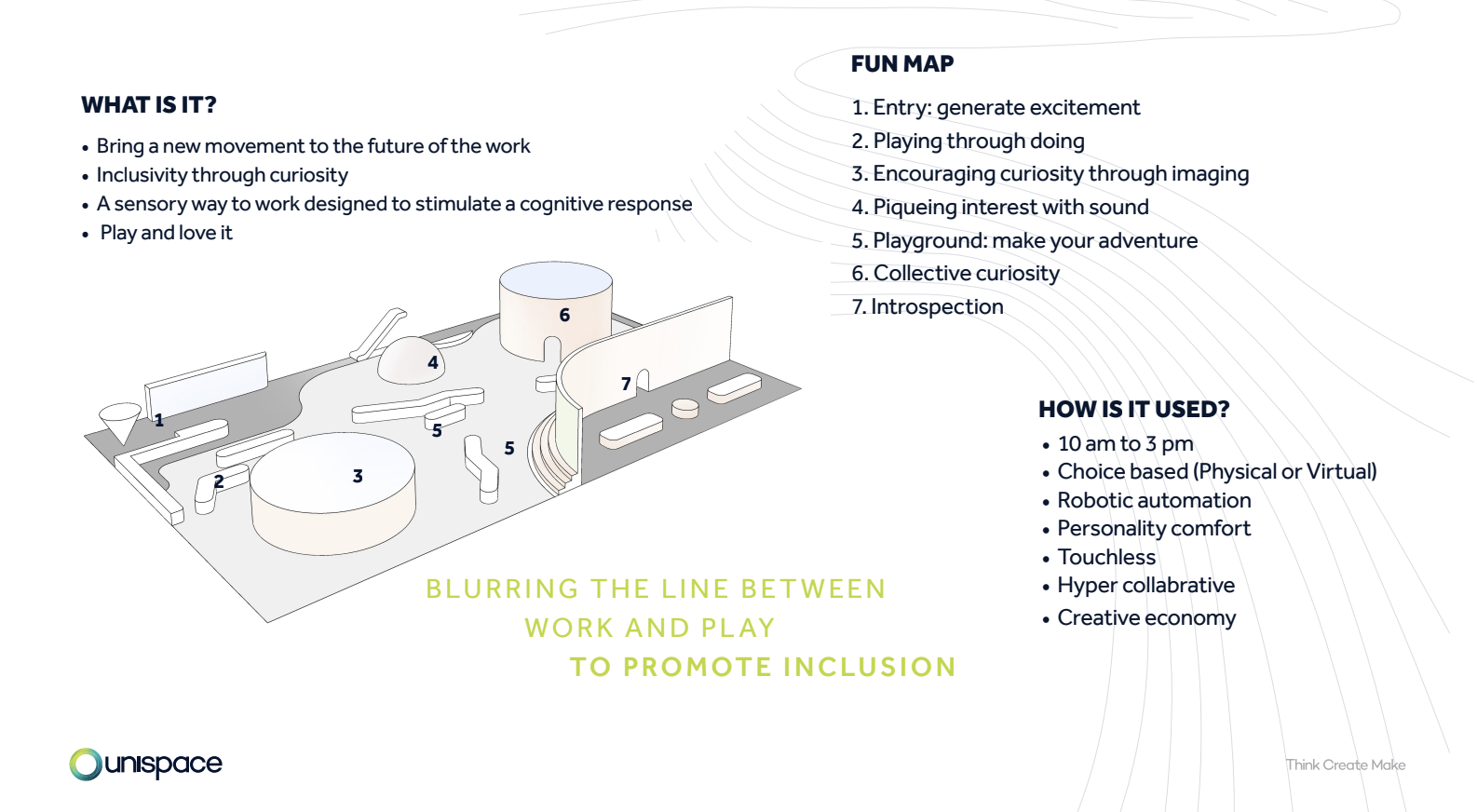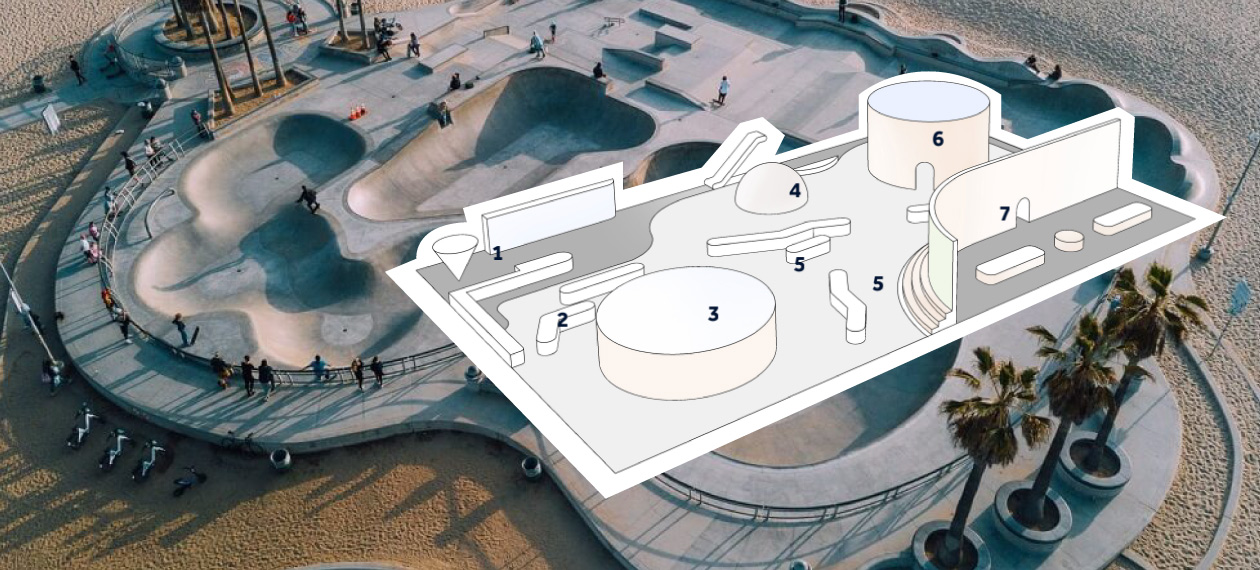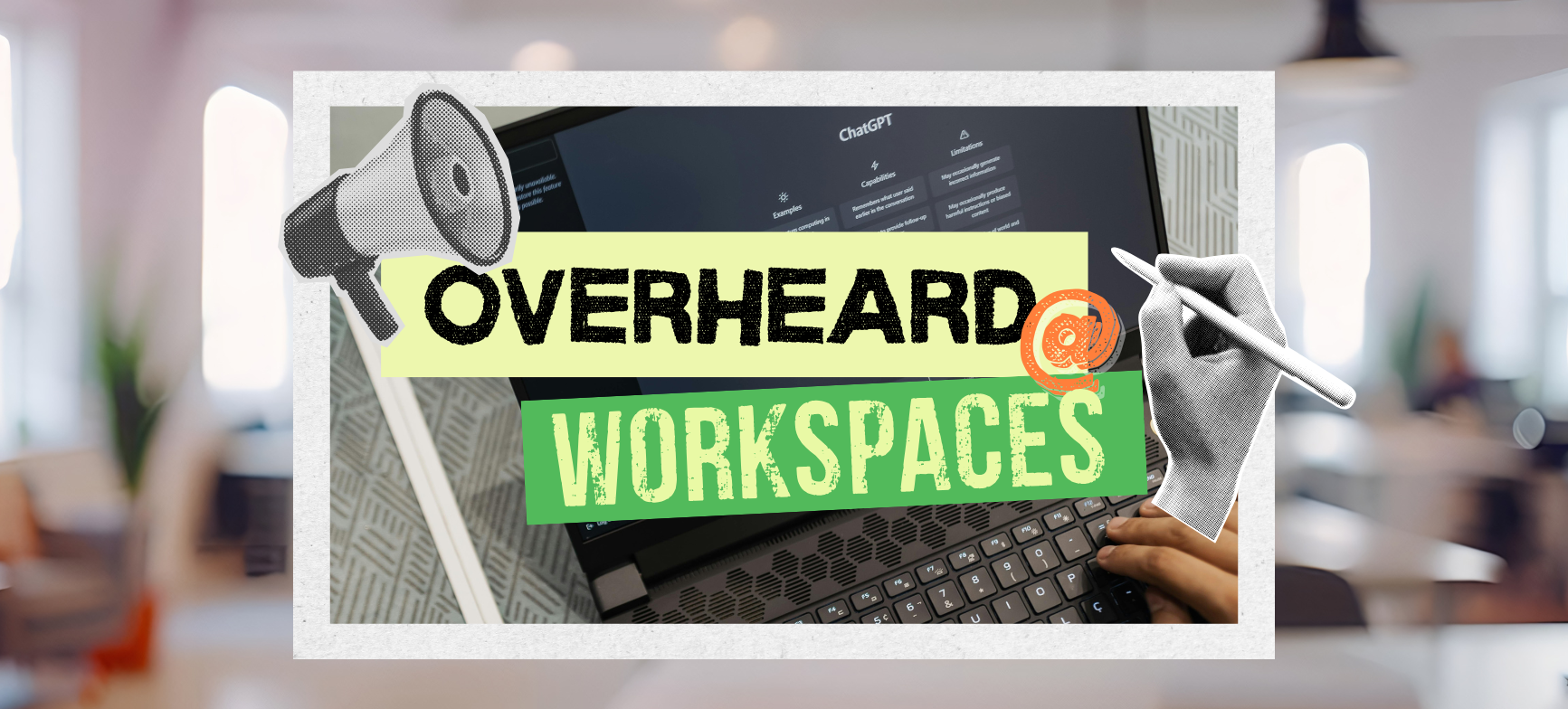As the disruption of the pandemic upended the way we work, Albert DePlazaola and Emily Watkins noticed a trend. Faced with a sudden need to do whatever it takes to recruit and retain employees, workplaces started contemplating how they could adopt more human-centric designs. “It made me wonder,” said DePlazaola. “Who have we been designing for, then?
In a presentation at WorkSpaces ’21, DePlazaola and Watkins—Unispace’s Global Principal and then-Head of Enterprise & Channel Partnerships, respectively—argued that the challenge ahead would be to design spaces that consider the human experience in a nuanced and holistic sense, elevating the employee as consumer of a given space. The post-pandemic workplace embraces what they call the new flexibility.
"We think about the new flexibility as providing employees with different types of space within your real estate ecosystem than you might have offered them before," Watkins said. "This idea of being able to have certain pockets of your campuses, or certain pockets of your buildings, that you're devoting to create a different level of experience for them is something that we're really intrigued by—and something that we're starting to talk to a lot of our clients about as well.”
Learning from the Venice Skatepark
Their vision was shaped in part by a walk DePlazaola took to the Venice boardwalk with Dean Rikanovic, an architect colleague visiting from Australia. “All of a sudden we hit the skatepark, and we just sat there and observed, and what we realized was that it was probably one of the most diverse crowds that we had seen,” he recalled, marveling at the range of ages and identities all coalescing in one place. “Why do we think this is so? What is bringing this kind of diversity into the skatepark? And what we came up with is, it's probably two things: they're coming there to learn, and they're coming there—probably more importantly—they're coming there to play.”
As he dug deeper into the relationship between work and play, DePlazaola learned there are four ways people do both: kinesthetically; using visual tools; using auditory tools; and by getting into a flow state. What would it mean to bridge the gap between work and play, to make them one and the same? “What we're really talking about is making a more diverse, a more inclusive, and a more equitable workplace,” he theorized. Dean translated this theory into space.
Embracing Taxonomies of Play
That doesn’t mean businesses should start installing skateparks in their offices, of course, but it does point to a need to embrace taxonomies that enable play and learning. As DePlazaola sees it, the flexible office is built around four environments, translating those taxonomies into functional workspaces:
- Kinesthetic maker spaces, designed for testing and experimentation, might look like multi-functional open areas, with robotics and 3D printing tech that allow for rapid prototyping;
- Visual spaces, designed for exhibiting and watching, might look like enclosed rooms with immersive tech—virtual reality drawing studios, massive screens for video conferences or group coding sessions—in an all-encompassing amphitheater format;
- Flow spaces, designed for quiet and focus, might look like well-lit libraries perfect for heads-down work;
- Auditory spaces, for sharing and listening, might look like a studio with soundscape simulators and all manner of audio playthings.
"We're not saying that this is exactly what we would suggest for all of our clients; what this is meant to be is an idea-starter," DePlazaola said as he walked the audience through a digital rendering of their concept: past the high-tech maker space, the acoustic lounge, into the visual immersion tank, through the adaptable open areas between them all, and finally into the “raw study space,” bookshelves lining the wall and lush greenery dangling from the ceiling. “We intentionally made the space very open,” he explained. “What we're looking to do is create movement through the space, have people run into each other, but also do it in the spirit of playing and learning.”

Building Trust Through Play
The fundamental goal is to create a more inclusive, egalitarian environment by shifting the psychological paradigms around work. Setting aside the intrinsic merits of the approach, DePlazaola and Watkins hope it will have the additional benefit of making employees a little more comfortable coming back to the office. “The challenge that we were trying to address through this concept is, could we get people to come back to play?” he said. “And if they were informal about how they play, would that start to engender trust that they probably hadn't had in Zoom calls? This whole concept is trying to get people to come in in a very level playing ground, and doing it through the art of play.”
As he wrapped up the presentation, DePlazaola acknowledged that their model might not be the right fit for every office, but encouraged the audience to ask big questions and pursue bold ideas as they search for their own answers. “We’re not saying this is the right answer; we just want to provoke a little bit,” he said. “The real danger now is the risk of doing nothing.”

Posted by
Join us at WorkSpaces!
The retreat for corporate real estate and workplace innovators.
Oct 4-6, 2026 | Santa Barbara, CA




-3.png)
-3.png)


-2.png)

Comments